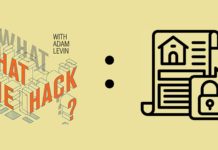
Identity theft and credit card fraud are on the rise. Advisory firm Javelin Strategy & Research reported a 16 percent increase in the “identity fraud incidence rate” in 2016, the highest since the firm started tracking in 2003. The result? A massive $16 billion of losses during a single year.
Although the majority of these incidents involved credit card fraud, account takeovers (in which someone steals your information to access your financial accounts) increased by 31 percent, totaling a $2.3 billion loss in 2016. What’s more, this type of fraud is one of the toughest to combat.
Tough to combat doesn’t mean impossible, however. The sooner you go on the defensive after identity theft, the quicker you can regain control of your credit. Here’s how.
1. Contact all companies that have fraudulent
charges or accounts in your name
If you’ve been contacted by debt collectors regarding accounts that weren’t opened by you, then you can go ahead and work with them to resolve the issue. But if you discovered fraudulent accounts by other means, contact the company the charge was made with.
Each company might have a different process for resolving such issues, so it’s best to communicate with them right away.
2. Close and reissue cards for any
compromised credit and deposit accounts
For any fraudulent charges using your credit or debit card, call your issuer to report the charges and close your accounts. Your issuer should then take care of opening new accounts for you and issuing you new cards.
As soon as you do this, you can halt the thief’s spending spree with your money.
3. Put a fraud alert or a credit freeze
on your credit reports
The next step is to put safeguards around your credit, which you can do with a fraud alert or credit freeze.
A fraud alert lasts for 90 days and can be renewed, or you can do an extended fraud alert that lasts for seven years. For this, reach out to each of the three credit-reporting agencies (Experian, Equifax, TransUnion) and either request this over the phone or follow the steps to do it online.
The fraud alert requires lenders to undergo additional steps to verify your identity before opening new accounts. But if you’ve experienced multiple instances of identity theft or want to take even more precautions, you can instead opt for a credit freeze.
A credit freeze is just what it sounds like — as long as the freeze is in place, no one can access your credit report. This is something to keep in mind if you’re in the market for a new loan, such as a mortgage, or even if you’re looking for a new apartment and know a credit check will be involved.
However, you can temporarily lift a credit freeze if you need to. Rod Griffin, director of public education at Experian, says all you have to do is contact the agencies before you need your credit to be available for an application and give them the PIN code you received during your freeze. Griffin also warns that, “a credit freeze will not prevent identity theft or use of a stolen identity to commit fraud that does not involve credit reports.”
Just like with a fraud alert, you can do the freeze online or contact the credit-reporting agencies to get their help with the process.
4. File a report with the
Federal Trade Commission
The Federal Trade Commission (FTC) has created a website specifically to help with identity theft instances such as the one you might be going through: IdentityTheft.gov.
Not only does this site provide a great deal of information to help, it also enables you to report the fraud to the FTC directly. You can either report the issue here or call the commission at 1-877-438-4338. The FTC advises that you include as many details as you can in your report.
This report will serve as proof to the businesses you’re dealing with that you have in fact been victimized by identity theft.
5. Dispute fraudulent accounts
on your credit report
Finally, make sure you let the credit-reporting agencies know if there are any accounts on your report that aren’t yours.
How can you tell if this has happened if you’re not sure already? Simply get your credit report — one from each of the three credit-reporting bureaus — at AnnualCreditReport.com. This service is available for free once per year, making it easy to review your accounts to ensure that they’re all yours.
And if any aren’t, immediately dispute the error with the credit-reporting agency (or agencies) that show it.
Maintaining good credit habits after identity theft
The average American’s household budget is already tight enough. Piling on fraudulent charges and accounts could nudge a tight financial situations to its breaking point.
You can protect yourself from this with a few small steps. For example:
- Use long and complex passwords with numbers and special characters for all your logins — and have a different password for every online account you create.
- Only shop on secure websites (look for the lock icon on the address bar) and sites you trust.
- Never input your financial information or access financial accounts on public networks.
- Review your bank and credit card statements each month to ensure all charges were in fact initiated by you.
- Keep a close eye on your credit reports, and act immediately if there’s anything that you know isn’t yours.
When it comes to protecting your credit, a little diligence can go a long way.
This article originally appeared on Credit.com and was written by Shannon Insler.









